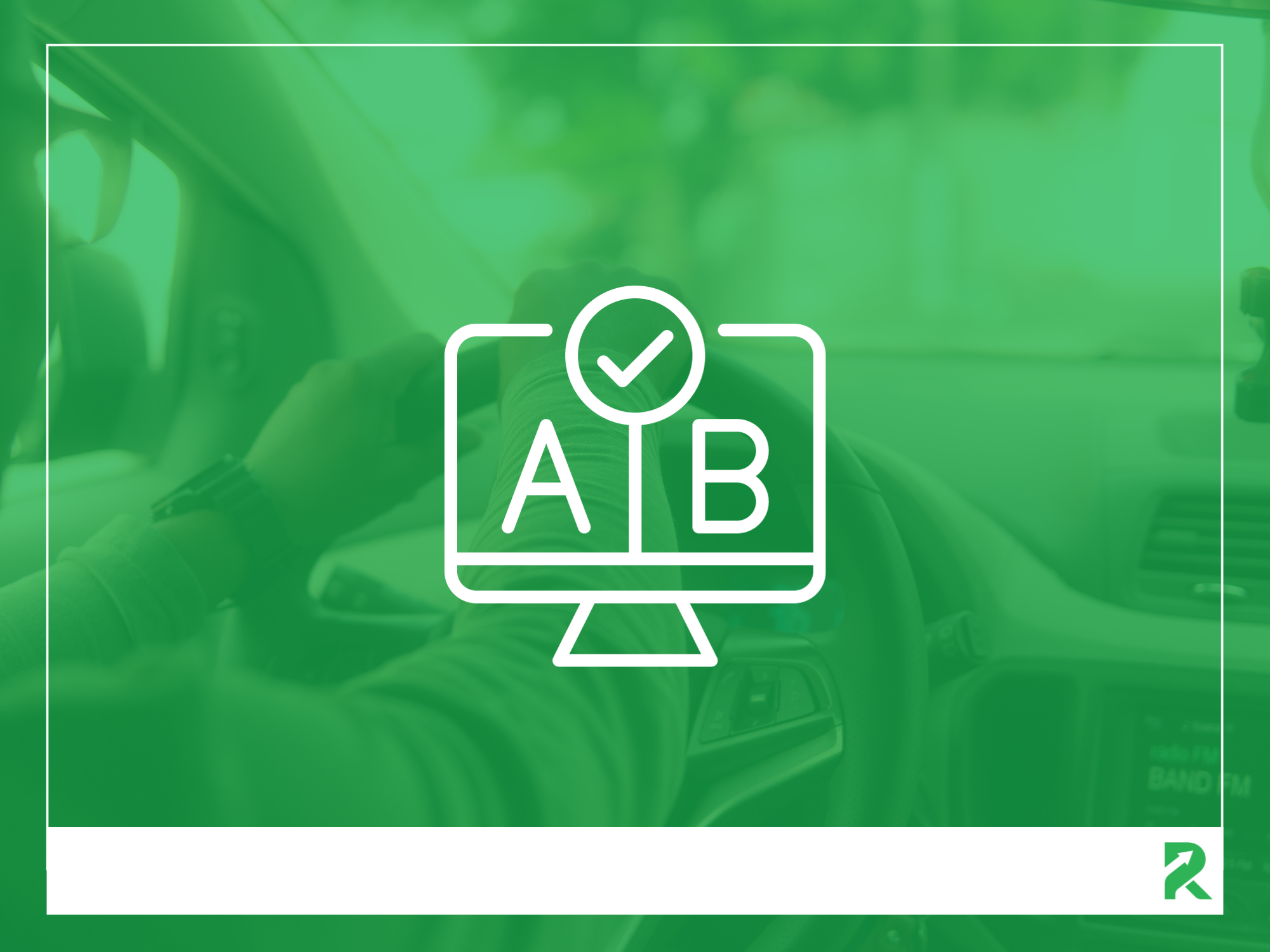Table of Contents
If you’re trying to boost your lead conversion rates in HubSpot, then look no further than A/B testing. Let’s take a look at various strategies and techniques to increase lead conversion using A/B testing in HubSpot, from optimizing email engagement to supercharging landing pages and websites.
TL;DR: What is A/B testing in HubSpot, and how does it improve lead conversion?
-
Use A/B testing to improve email opens, clicks, landing page conversions, and website engagement.
-
Test subject lines, preheader text, sender names, CTAs, visuals, videos, and form designs.
-
Follow best practices by setting clear goals, testing one variable at a time, and ensuring statistical significance.
-
Try adaptive testing in HubSpot to automatically shift traffic to the winning variation.
Start experimenting with HubSpot’s Free CRM to run A/B tests across emails, forms, and landing pages
(Affiliate link: if you sign up, we may earn a commission at no extra cost to you).
How can A/B testing in HubSpot boost your email engagement rates?
Your email marketing campaigns are only effective if they engage your audience. A/B testing in HubSpot allows you to experiment with different elements to find the winning combination that will increase your open and click-through rates.
When it comes to email marketing, standing out in a crowded inbox is crucial. A/B testing provides you with the opportunity to optimize your email subject lines, ensuring that they capture the attention of your subscribers. By crafting two or more variations and tracking their performance, you can analyze the data and identify the subject line that resonates the most with your audience.
Consider testing subject lines that evoke curiosity, urgency, or personalization. Experiment with different lengths, tones, and keywords to discover what drives higher open rates. Remember, a concise, compelling, and personalized subject line can make all the difference in capturing your subscribers' interest.
Increase Email Opens with A/B Testing in HubSpot
One way to boost email opens is by testing different subject lines. Craft two or more variations and track their performance. Analyze the data and identify the subject line that resonates the most with your audience. Remember to keep it concise, compelling, and personalized.
In addition to subject lines, A/B testing can also help you optimize other elements of your email, such as the preheader text. The preheader text is the snippet of text that appears next to or below the subject line in the inbox preview. By experimenting with different preheader texts, you can entice your subscribers to open your emails by providing a sneak peek of what's inside.
Also, A/B testing in HubSpot can be used to test different sender names and email addresses. Sometimes, a more personal or recognizable sender name can increase open rates. Additionally, testing different email addresses, such as using a generic "no reply" address versus a personalized one, can impact how your emails are perceived by recipients.
Maximize Email Clicks with A/B in HubSpot
Getting your emails opened is just the first step. You also need to guide your subscribers to take action. A/B testing can help you determine the most effective calls-to-action (CTAs) and improve click-through rates. Test different wording, colors, and placements to find what works best for your audience.
When it comes to CTAs, it's important to strike a balance between being persuasive and not overwhelming your subscribers. A/B testing can help you find the sweet spot by experimenting with different CTA copy, button designs, and sizes. You can also test the placement of your CTAs within the email, such as above the fold or at the end of the content, to see which position generates more clicks.
In addition, A/B testing can be utilized to optimize the overall email layout and design. Experiment with different email templates, fonts, images, and colors to create a visually appealing and engaging experience for your subscribers. By continuously testing and refining your email design, you can ensure that it aligns with your brand and resonates with your audience.
How do you run A/B tests in HubSpot to improve landing pages and website performance?
Your landing pages and website play a crucial role in converting leads. A/B testing in HubSpot empowers you to optimize these crucial touchpoints, ensuring that visitors have a seamless journey and are more likely to take the desired action.
Build and optimize landing pages with HubSpot Marketing Hub which includes built-in A/B and adaptive testing features
(Affiliate link: if you sign up, we may earn a commission at no extra cost to you).
Enhance Visual Appeal with A/B Testing on Images
The power of visuals cannot be underestimated. Experiment with different images on your landing pages and website to see which ones resonate best with your audience. Test different formats, sizes, and placements to improve engagement and conversion rates.
For example, you can try using high-resolution images that showcase your product or service in action. Alternatively, you can test using more abstract images that evoke emotions and curiosity. By analyzing the results of these A/B tests, you can gain insights into the types of visuals that capture your audience's attention and drive them to take action.
Optimize CTAs with A/B Testing in HubSpot
Your CTAs are the driving force behind lead conversion. Test different variations such as button colors, wording, and placement to find the combination that generates the highest click-through rates. A small tweak to your CTA can make a significant impact on conversion.
For instance, you can experiment with using contrasting colors for your CTA buttons to make them stand out more. You can also test different wording options to see which ones resonate better with your audience. By continuously testing and refining your CTAs, you can ensure that they are compelling and persuasive, leading to higher conversion rates.
Harness the Power of Video or Testimonials with A/B Testing in HubSpot
Video and customer testimonials have the ability to build trust and influence decision-making. Experiment with different video content or testimonials on your landing pages to see if they increase conversion rates. Testimonials can be displayed in various formats, such as text, audio, or video.
Consider creating a video that showcases the benefits and features of your product or service. Alternatively, you can gather testimonials from satisfied customers and display them prominently on your landing pages. By testing different video content and testimonials, you can determine which ones resonate best with your audience and drive higher conversion rates.
Improve Conversion Rates with A/B Testing on Forms
Your forms are crucial for capturing lead information. A/B test different form designs, lengths, and fields to find the optimal balance between gathering necessary information and making the form easy to complete. Simplifying your forms can significantly improve conversion rates.
Try experimenting with shorter forms that only ask for essential information. Alternatively, you can test different form layouts to make them more visually appealing and user-friendly. By analyzing the results of these A/B tests, you can identify the form design that maximizes conversions while minimizing friction for your visitors.
What are the best practices for running effective A/B tests in HubSpot?
A/B testing can be a game-changer for your lead conversion rates, but to achieve meaningful results, it's essential to follow best practices:
When it comes to A/B testing, defining clear objectives is crucial. Before you start testing, ask yourself: What specific metric or key performance indicator KPI are you trying to improve? By identifying your goals upfront, you can focus your efforts on making impactful changes.
Another important best practice is to focus on testing one element at a time. This approach allows you to isolate the impact of each change and make data-driven decisions. By testing one variable at a time, you can accurately measure its effect on your conversion rates.
While conducting A/B tests, it's essential to ensure that your test samples are statistically significant. In other words, you need to have a large enough sample size to obtain reliable results. A small sample size may lead to unreliable data, making it challenging to draw accurate conclusions. Remember, the larger the sample size, the more accurate the data.
Patience is key when it comes to A/B testing. Giving your tests ample time to run is crucial for obtaining accurate and reliable insights. Rushing to conclusions without sufficient data can lead to inaccurate insights and misguided decision-making. It's important to let your tests run for an appropriate duration to gather enough data for analysis.
Regular monitoring and analysis of your test results are essential for successful A/B testing. By regularly checking your results, you can identify patterns, trends, and statistically significant differences. These insights can guide your decision-making process and help you make informed choices about which variations to implement.
By following these best practices, you can maximize the effectiveness of your A/B testing efforts and drive significant improvements in your lead conversion rates. Remember, A/B testing is an iterative process, so don't be afraid to experiment, learn from your results, and continuously optimize your strategies.
What is adaptive testing in HubSpot, and how does it improve A/B test results?
In addition to traditional A/B testing, HubSpot offers an advanced feature called adaptive testing. This takes testing to the next level by automatically favoring the winning variation as the test progresses. Adaptive testing helps you continuously optimize your campaigns without manual intervention, allowing you to achieve optimal results faster.
But what exactly is adaptive testing and how does it work? Adaptive testing is a dynamic testing method that adjusts the distribution of variations based on their performance. As the test progresses, the system automatically allocates more traffic to the winning variation, increasing its exposure and maximizing its chances of success.
Imagine you're running an A/B test on a landing page. You have two variations: Variation A and Variation B. Initially, the system splits the traffic evenly between the two variations. As visitors start interacting with the page, the system collects data on their behavior and performance metrics.
Let's say Variation A starts outperforming Variation B in terms of conversion rate. The adaptive testing algorithm recognizes this and starts allocating a higher percentage of traffic to Variation A. This means that more visitors will see Variation A, increasing the chances of converting them into leads.
As the test continues, the system constantly evaluates the performance of each variation and adjusts the traffic allocation accordingly. This iterative process allows you to quickly identify the most effective variation and allocate more resources to it, maximizing your chances of success.
HubSpot provides a user-friendly interface that allows you to set up and manage adaptive tests with ease. You can define the variations, set the traffic allocation rules, and monitor the performance of each variation in real-time.
Once you have set up your adaptive test, HubSpot takes care of the rest. The system automatically adjusts the traffic allocation based on the performance data it collects, allowing you to focus on analyzing the results and refining your campaigns.
With adaptive testing, you can unleash the full potential of your lead generation efforts. By continuously optimizing your campaigns without manual intervention, you can achieve optimal results faster and drive more conversions.
Adaptive testing is included in HubSpot’s Starter Platform giving you automation and data-driven optimization out of the box
(Affiliate link: if you sign up, we may earn a commission at no extra cost to you).
Wrapping Up
Now that you have all the information that will enable you to increase lead conversion with A/B testing in HubSpot, it's time to put these strategies into action. If you take the time to experiment, analyze, and refine your campaigns, you can unlock the full potential of your lead generation efforts!




